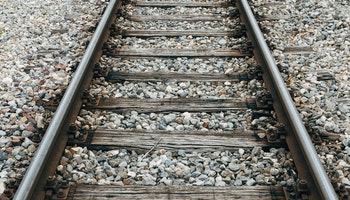Bearing Plates in Railway
Bearing plates are cast iron, wrought iron, or mild steel plate which are placed in between the F.F. rail to distribute the load on a large area of wooden sleepers.

If the flat-footed rails are directly fixed on wooden sleepers, sinking in the sleeper takes place due to heavy loads of trains and thus loosens the spikes. To overcome this difficulty, bearing plates are provided under F.F. rails and bring the intensity of the pressure within the limit.
The bearing plates are widely used in countries such as the United States, where heavy vehicles travel on treated softwood sleepers at high speeds.
But in India, the use of the bearing plate is not extensive, these are used only at special locations such as rail joints on curves and bridges, on ash-pit, under points and crossings, etc.
The bearing plates may be either flat or canted. The flat bearing plates are used in turnout tracks and such other places where rails are to be laid flat. In all other cases, the canted bearing plates are adopted.
Advantages
The using of the bearing plates in the railway has the following advantages
1. They distribute the loads to a large area.
2. The overall stability of the track is increased by using bearing plates.
3. When bearing plates are used, the wear of spikes due to vertical vibrations of rails against them is greatly reduced.
4. It helps to prevent the destruction of the sleeper due to the rubbing action of the rails.
5. It helps to maintain the gauge in a better and more effective way.
6. They increase the life span of sleepers.
Read More: